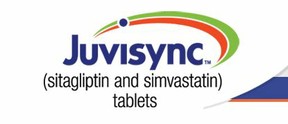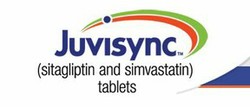
Information About Juvisync
by pharmacist
An article about Juvisync, the first prescription medication which combines an ingredient for Type 2 Diabetes and high cholesterol in 1 tablet.
 In the Fall of 2011 the Federal Drug Administration (FDA) approved Juvisync, a new combination drug intended to treat two common health conditions (Type II Diabetes and elevated cholesterol) in 1 convenient tablet. Juvisync is available only by prescription in the U.S. and is manufactured by the pharma company Merck & Co. As a pharmacist, I approach such new combination medications with mixed emotions. Such products offer some benefits, but there are also important concerns. In this article I will briefly discuss what Juvisync is, how it is intended to be used, and some potential concerns.
In the Fall of 2011 the Federal Drug Administration (FDA) approved Juvisync, a new combination drug intended to treat two common health conditions (Type II Diabetes and elevated cholesterol) in 1 convenient tablet. Juvisync is available only by prescription in the U.S. and is manufactured by the pharma company Merck & Co. As a pharmacist, I approach such new combination medications with mixed emotions. Such products offer some benefits, but there are also important concerns. In this article I will briefly discuss what Juvisync is, how it is intended to be used, and some potential concerns.
Juvisync is a combination of the following two prescription drugs:
1. Sitagliptan: Sitagliptin belongs to a group of medications used to treat Type II Diabetes, a condition which affects over 20 million Americans. Specifically, sitagliptin is a DPP-4 Inhibitor and has been marketed by itself to treat diabetes under the brand name Januvia (originally approved back in 2006). Sitagliptin works by increasing the production of insulin in our body and reducing the production of glucose, thus helping patients with diabetes lower their blood sugar. When used alone, sitagliptin does not tend to produce hypoglycemia (a dangerously low blood sugar), which is a significant advantage over older therapies.
2. Simvastatin: Simvastatin belongs to a group of medications used to treat elevated cholesterol levels known as "statins." Simvastatin interferes with the normal manufacturing of cholesterol in our body, and thereby reduces total cholesterol. Additionally, statins help to specifically reduce our "bad" cholesterol (LDL cholesterol) while increasing our "good" cholesterol (HDL cholesterol). Simvastatin was orignally marketed under the brand name "Zocor" but has been available generically now for several years.
The Rationale: Why make Juvisync? Why not just take the two products separately?
Here are some arguments in favor of the combination:
- First of all there is the benefit of convenience. It is simply easier to take 1 tablet than 2 or more.
- Second, there is the benefit of compliance. Statistically we will be more consistent and faithful in taking our medications the fewer the number of pills we have to take.
- Third, there is the benefit of cost. If a patient is already taking Januvia and also needs to take something for their cholesterol, it is quite possible that switching to Juvisync might save them some money (assuming that the copay you pay at the pharmacy is the same whether you are taking Januvia or getting the combination product Juvisync).
- Finally, this combination targets 2 of the major contributing factors to heart disease, which is still the #1 cause of all deaths in the U.S. Juvisync takes out two giants with 1 stone.
Should you take Juvisync? This question requires a little deeper look into exactly what DPP-4 inhibitors are and also what Statin drugs do. For that purpose I invite you to read two other articles I have written:
You might also like
How to React to and Help a Loved One with CancerDealing with cancer? Learn how to react, treat and care for a loved one when ...




Comments